EC
-
 S&T Policy Agenda of Major Presidential Candidates
Science and Technology Policy Agenda of Major Presidential Candidates
The KAIST TIMES recently reviewed science and technology policy suggestions made by five major presidential candidates. Below is a summary of the information assembled based on written interviews conducted by The KAIST TIMES, gatherings on science and technology policies, and press conferences.
Chung Dong-young of the United New Democratic Party
The UNDP’s Chung Dong-young presented a vision to join the world’s top seven aerospace leaders in an effort to transform Korea into a science-technology powerhouse.
In order to achieve this goal, he suggested five policy strategies: support research and development of creative, innovative science and technology, ; expand resources for the innovation of science and technology, ; promote academia and business partnerships, ; strengthen infrastructure to innovate scientific and technological fields, ; boost the morale of scientists and engineers, ; and promote the dissemination of scientific culture.
The most noticeable striking part element of his vision is to make add Korea to join the list of the world’s top seven aerospace powerhouses. Chung included the this vision in his 20 key 20 pledges, underscoring his commitment to the aerospace industry. He said that the aerospace industry can produce simultaneous growth of various high-tech industries.
Chung also vowed that he would extensively foster high-value added assembly industry in conjunction with a scheme to nurture parts and material industries.
As detailed action plans to achieve his vision, he cited development of small and medium-sized aircraft carriers and upgrading air control systems as part of the efforts to make Korea as a stronghold of popular aviation of in Northeast Asia. He also revealed plans to embark on a project to explore the Moon and send an unmanned probe there by 2020.
To implement aerospace development plans systematically, he suggested inaugurating the envisioned Korean Aeronautics and Space Administration, modeled after the NASA of the United States and JAXA of Japan.
Lee Myung-bak of the National Grand Party
Presidential candidate Lee pointed out basic sciences and open-source technologies as crucial prerequisites to achieve economic growth. As five implementation strategies to promote the development of these areas, he called for the fostering of more scientific and technological talents; a drastic increase in investment in science and technology; creation of new fusion industries that will serve as future growth engines; promotion of autonomy and creativity; and popularization of science and technology.
He also pledged to carry out two large-scale projects, the creation of “an international scientific-corporate city belt” and the technological development of new renewable energy.
Among them, drawing the largest attention is the creation of an “international scientific-corporate city belt” connecting several technological complexes located in Chungcheong Provinces. The city belt is envisioned to connect the Daedok Innopolis in Daejeon, the proposed Bio-Health Science Technopolis in Osong, Sceintific Industrial Complex in Ochang, and the new administrative town under construction in Yeongi-Gongju. At a lecture hosted by the Science and Technology Forum and the Korean Engineers Club, Lee said that the project has been motivated by the idea of locating research and corporate complexes in close proximity to bring about maximum efficiency of commercializing research results.
Kwon Young-ghil of the Democratic Labor Party
In a written interview with The KAIST TIMES, Kwon summed up his vision for science and technology as shifting from “science-technology for the rich and privileged” to “science and technology to promote public interest and participation.”
As action plans to realize his vision, he suggested increasing investment into public-interest research and development projects and building the necessary infrastructure as well as boosting relevance between science-technology policies and various welfare sectors including environment, health, and medicare. He also wishes to pay greater attention to improving the treatment of young engineers and scientists.
Moon Kook-hyun of the Creative Korea Party
Moon Kook-hyun’s science and technology policy proposals focus on nurturing more experts in the fields of science and technology. As specific action plans to ease the tendency among high-school graduates to shun the fields engineering and science as their majors, he revealed a plan to appoint a Prime Minister with an engineering or scientific background and positively expand social participation of engineering or science graduates.
He also expressed strong commitment to making Korea a technological power house, focusing on convergence of various high-tech industries including BT and IT. He would also build infrastructure to increase cooperation for technological development among large and mid and small-sized companies, and among Korea and many other countries.
Independent Candidate Lee Hoi-chang
Lee Hoi-chang’s vision for science and technology can be highlighted by his strong commitment to greatly increasing R& D investment in this area. He said that the move is aimed at expanding science and technology capital, which will serve as a fundamental infrastructure for corporate activities.
In particular, he said that he would concentrate on fostering eight core technologies based on individual knowledge and creativity: IT, BT, NT, ST, ET (Environment Technology), CT, MT(Marine Technology), and FT (Fusion Technology).
2007.12.17 View 16870
S&T Policy Agenda of Major Presidential Candidates
Science and Technology Policy Agenda of Major Presidential Candidates
The KAIST TIMES recently reviewed science and technology policy suggestions made by five major presidential candidates. Below is a summary of the information assembled based on written interviews conducted by The KAIST TIMES, gatherings on science and technology policies, and press conferences.
Chung Dong-young of the United New Democratic Party
The UNDP’s Chung Dong-young presented a vision to join the world’s top seven aerospace leaders in an effort to transform Korea into a science-technology powerhouse.
In order to achieve this goal, he suggested five policy strategies: support research and development of creative, innovative science and technology, ; expand resources for the innovation of science and technology, ; promote academia and business partnerships, ; strengthen infrastructure to innovate scientific and technological fields, ; boost the morale of scientists and engineers, ; and promote the dissemination of scientific culture.
The most noticeable striking part element of his vision is to make add Korea to join the list of the world’s top seven aerospace powerhouses. Chung included the this vision in his 20 key 20 pledges, underscoring his commitment to the aerospace industry. He said that the aerospace industry can produce simultaneous growth of various high-tech industries.
Chung also vowed that he would extensively foster high-value added assembly industry in conjunction with a scheme to nurture parts and material industries.
As detailed action plans to achieve his vision, he cited development of small and medium-sized aircraft carriers and upgrading air control systems as part of the efforts to make Korea as a stronghold of popular aviation of in Northeast Asia. He also revealed plans to embark on a project to explore the Moon and send an unmanned probe there by 2020.
To implement aerospace development plans systematically, he suggested inaugurating the envisioned Korean Aeronautics and Space Administration, modeled after the NASA of the United States and JAXA of Japan.
Lee Myung-bak of the National Grand Party
Presidential candidate Lee pointed out basic sciences and open-source technologies as crucial prerequisites to achieve economic growth. As five implementation strategies to promote the development of these areas, he called for the fostering of more scientific and technological talents; a drastic increase in investment in science and technology; creation of new fusion industries that will serve as future growth engines; promotion of autonomy and creativity; and popularization of science and technology.
He also pledged to carry out two large-scale projects, the creation of “an international scientific-corporate city belt” and the technological development of new renewable energy.
Among them, drawing the largest attention is the creation of an “international scientific-corporate city belt” connecting several technological complexes located in Chungcheong Provinces. The city belt is envisioned to connect the Daedok Innopolis in Daejeon, the proposed Bio-Health Science Technopolis in Osong, Sceintific Industrial Complex in Ochang, and the new administrative town under construction in Yeongi-Gongju. At a lecture hosted by the Science and Technology Forum and the Korean Engineers Club, Lee said that the project has been motivated by the idea of locating research and corporate complexes in close proximity to bring about maximum efficiency of commercializing research results.
Kwon Young-ghil of the Democratic Labor Party
In a written interview with The KAIST TIMES, Kwon summed up his vision for science and technology as shifting from “science-technology for the rich and privileged” to “science and technology to promote public interest and participation.”
As action plans to realize his vision, he suggested increasing investment into public-interest research and development projects and building the necessary infrastructure as well as boosting relevance between science-technology policies and various welfare sectors including environment, health, and medicare. He also wishes to pay greater attention to improving the treatment of young engineers and scientists.
Moon Kook-hyun of the Creative Korea Party
Moon Kook-hyun’s science and technology policy proposals focus on nurturing more experts in the fields of science and technology. As specific action plans to ease the tendency among high-school graduates to shun the fields engineering and science as their majors, he revealed a plan to appoint a Prime Minister with an engineering or scientific background and positively expand social participation of engineering or science graduates.
He also expressed strong commitment to making Korea a technological power house, focusing on convergence of various high-tech industries including BT and IT. He would also build infrastructure to increase cooperation for technological development among large and mid and small-sized companies, and among Korea and many other countries.
Independent Candidate Lee Hoi-chang
Lee Hoi-chang’s vision for science and technology can be highlighted by his strong commitment to greatly increasing R& D investment in this area. He said that the move is aimed at expanding science and technology capital, which will serve as a fundamental infrastructure for corporate activities.
In particular, he said that he would concentrate on fostering eight core technologies based on individual knowledge and creativity: IT, BT, NT, ST, ET (Environment Technology), CT, MT(Marine Technology), and FT (Fusion Technology).
2007.12.17 View 16870 -
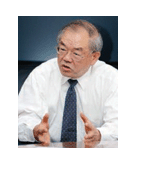 The US Science Magazine Published KAIST News on Nov. 30
An educational innovation of our university arouses world"s interest.
The world science magazine, the U.S Science reports deeply President Suh Nampyo" KAIST reform, fund, tenure review, tuition, admission and faculty recruit in News Focus, internet version on 30 November. There is full text of the news below.http://www.sciencemag.org/cgi/content/full/318/5855/1371
News FocusHIGHER EDUCATION:MIT Engineer Shakes Korean Academia to Its CoreDennis Normile
Radical measures from the new president of the Korea Advanced Institute of Science and Technology are roiling a tradition-bound system
Worldly. To gain stature beyond Korea, KAIST has lured students from Vietnam, China, and Rwanda, among other countries.
CREDIT: D. NORMILE/SCIENCE
DAEJEON, SOUTH KOREA--When the Korea Advanced Institute of Science and Technology (KAIST) announced on 19 November that an entrepreneur had donated $2.5 million to the university with promises of more to follow, it marked the latest in a string of coups for the new president, Suh Nam Pyo. A mechanical engineer on leave from the Massachusetts Institute of Technology (MIT) in Cambridge, Suh has raised an unprecedented amount--$12.5 million--in a country where donations to universities are rare. He"s challenging other traditions as well. For example, KAIST"s latest tenure review turned down several candidates, a shocking move by Korean standards.Suh says he is aiming to make KAIST "as good as the best [universities], including MIT." Many faculty members agree that Suh"s "overall philosophy and vision are correct," says KAIST systems biologist Lee Sang Yup. But there are concerns about how Suh will implement that vision at the 36-year-old university.
The KAIST community has reason to be cautious. In 2004, the university hired Nobel physics laureate Robert Laughlin as president--the first foreigner to lead a Korean university--with a mandate to transform KAIST into a world-class institution. Laughlin, on leave from Stanford University in Palo Alto, California, proposed privatizing KAIST and charging tuition, focusing on commercialization, and tripling undergraduate enrollment (Science, 25 February 2005, p. 1181; 20 January 2006, p. 321). But when Laughlin"s plans failed to materialize, "the faculty was disappointed," says KAIST molecular biologist Chung Jongkyeong. In 2006, the board of trustees decided to seek a new president.
The board turned to Suh. Born in Gyeongju, South Korea, in 1936, Suh moved to the United States with his family as a teenager and earned a doctorate in mechanical engineering from Carnegie Mellon University in Pittsburgh, Pennsylvania. As an MIT professor, Suh has won plaudits for his engineering design theories, earned more than 50 patents, and helped start several companies. In the early 1980s, he was assistant director for engineering at the U.S. National Science Foundation, and he headed MIT"s Department of Mechanical Engineering from 1991 until 2001.
Since arriving at KAIST in July 2006, Suh has opened undergraduate education to non-Korean students for the first time by insisting that many courses be taught in English. Suh decided that students who maintain "B" or better grades would continue to pay no tuition, whereas those with a "C" or below must pay about $16,000 per year starting in February. "We want students to take responsibility for their actions," Suh says.
Agent of change. KAIST"s faculty supports Suh Nam Pyo"s reforms, so far.
CREDIT: KAIST
A new admissions process may also have broad impact. Previously, KAIST, like most of Korea"s top universities, selected the top scorers in a written exam. Most high school students spend their free time prepping for these tests in cram schools. But Suh says that scores "are a one-dimensional measure" that fails to identify leaders. So candidates for KAIST"s next incoming class were invited to campus this fall for interviews, to give presentations, and to engage in discussions while being observed by faculty members, who made selections based on scores and personal impressions. "We"re looking for future Einsteins and future Bill Gateses," says Suh.An even more radical step was putting teeth into tenure reviews. Traditionally, faculty members in Korea gain tenure after logging enough years. Suh insisted that KAIST professors up for tenure gather endorsements from experts in their field around the world. In September, 11 of 33 applicants were denied tenure and were given a year to find new jobs.
The tenure review "is the beginning of an educational revolution," says KAIST chemist Ryoo Ryong. But he and others worry about the fate of those denied tenure. Suh understands their predicament but is standing firm. The professors who didn"t make tenure "are very good people, but in terms of the standard we set, they"re not as good as we expect our professors to be." He is asking other universities to consider giving these professors a chance.
At the same time, Suh is looking to inject fresh blood--including foreigners--into the 418-strong faculty with a plan to add 300 professors over the next 4 to 5 years. (To expand the school, Suh is striving to win government approval for a doubling of KAIST"s base governmental support of $108 million.) His first catch is Mary Kathryn Thompson, who completed her Ph.D. in mechanical engineering at MIT last year. "It"s an exciting time to be here," says Thompson, who just started studying Korean when she arrived last August.
Although they support Suh"s initiatives, some faculty members chafe at his blunt public comments implying that Korea"s professors take life too easy. "I cannot agree," says Choi Yang-Kyu, an electrical engineer. "Most professors here are working very hard." Biomolecular engineer Kim Hak-Sung adds: "President Suh should have sticks and carrots, not just sticks."
Carrots don"t come cheap. "I"m spending most of my time trying to raise money," Suh says. Part of that effort is wooing private donors. "Giving to universities is not prevalent in Asia, but it is something I"m trying to nurture in Korea," he says. That"s a precedent all of Korea"s universities might want to embrace.
2007.11.30 View 16825
The US Science Magazine Published KAIST News on Nov. 30
An educational innovation of our university arouses world"s interest.
The world science magazine, the U.S Science reports deeply President Suh Nampyo" KAIST reform, fund, tenure review, tuition, admission and faculty recruit in News Focus, internet version on 30 November. There is full text of the news below.http://www.sciencemag.org/cgi/content/full/318/5855/1371
News FocusHIGHER EDUCATION:MIT Engineer Shakes Korean Academia to Its CoreDennis Normile
Radical measures from the new president of the Korea Advanced Institute of Science and Technology are roiling a tradition-bound system
Worldly. To gain stature beyond Korea, KAIST has lured students from Vietnam, China, and Rwanda, among other countries.
CREDIT: D. NORMILE/SCIENCE
DAEJEON, SOUTH KOREA--When the Korea Advanced Institute of Science and Technology (KAIST) announced on 19 November that an entrepreneur had donated $2.5 million to the university with promises of more to follow, it marked the latest in a string of coups for the new president, Suh Nam Pyo. A mechanical engineer on leave from the Massachusetts Institute of Technology (MIT) in Cambridge, Suh has raised an unprecedented amount--$12.5 million--in a country where donations to universities are rare. He"s challenging other traditions as well. For example, KAIST"s latest tenure review turned down several candidates, a shocking move by Korean standards.Suh says he is aiming to make KAIST "as good as the best [universities], including MIT." Many faculty members agree that Suh"s "overall philosophy and vision are correct," says KAIST systems biologist Lee Sang Yup. But there are concerns about how Suh will implement that vision at the 36-year-old university.
The KAIST community has reason to be cautious. In 2004, the university hired Nobel physics laureate Robert Laughlin as president--the first foreigner to lead a Korean university--with a mandate to transform KAIST into a world-class institution. Laughlin, on leave from Stanford University in Palo Alto, California, proposed privatizing KAIST and charging tuition, focusing on commercialization, and tripling undergraduate enrollment (Science, 25 February 2005, p. 1181; 20 January 2006, p. 321). But when Laughlin"s plans failed to materialize, "the faculty was disappointed," says KAIST molecular biologist Chung Jongkyeong. In 2006, the board of trustees decided to seek a new president.
The board turned to Suh. Born in Gyeongju, South Korea, in 1936, Suh moved to the United States with his family as a teenager and earned a doctorate in mechanical engineering from Carnegie Mellon University in Pittsburgh, Pennsylvania. As an MIT professor, Suh has won plaudits for his engineering design theories, earned more than 50 patents, and helped start several companies. In the early 1980s, he was assistant director for engineering at the U.S. National Science Foundation, and he headed MIT"s Department of Mechanical Engineering from 1991 until 2001.
Since arriving at KAIST in July 2006, Suh has opened undergraduate education to non-Korean students for the first time by insisting that many courses be taught in English. Suh decided that students who maintain "B" or better grades would continue to pay no tuition, whereas those with a "C" or below must pay about $16,000 per year starting in February. "We want students to take responsibility for their actions," Suh says.
Agent of change. KAIST"s faculty supports Suh Nam Pyo"s reforms, so far.
CREDIT: KAIST
A new admissions process may also have broad impact. Previously, KAIST, like most of Korea"s top universities, selected the top scorers in a written exam. Most high school students spend their free time prepping for these tests in cram schools. But Suh says that scores "are a one-dimensional measure" that fails to identify leaders. So candidates for KAIST"s next incoming class were invited to campus this fall for interviews, to give presentations, and to engage in discussions while being observed by faculty members, who made selections based on scores and personal impressions. "We"re looking for future Einsteins and future Bill Gateses," says Suh.An even more radical step was putting teeth into tenure reviews. Traditionally, faculty members in Korea gain tenure after logging enough years. Suh insisted that KAIST professors up for tenure gather endorsements from experts in their field around the world. In September, 11 of 33 applicants were denied tenure and were given a year to find new jobs.
The tenure review "is the beginning of an educational revolution," says KAIST chemist Ryoo Ryong. But he and others worry about the fate of those denied tenure. Suh understands their predicament but is standing firm. The professors who didn"t make tenure "are very good people, but in terms of the standard we set, they"re not as good as we expect our professors to be." He is asking other universities to consider giving these professors a chance.
At the same time, Suh is looking to inject fresh blood--including foreigners--into the 418-strong faculty with a plan to add 300 professors over the next 4 to 5 years. (To expand the school, Suh is striving to win government approval for a doubling of KAIST"s base governmental support of $108 million.) His first catch is Mary Kathryn Thompson, who completed her Ph.D. in mechanical engineering at MIT last year. "It"s an exciting time to be here," says Thompson, who just started studying Korean when she arrived last August.
Although they support Suh"s initiatives, some faculty members chafe at his blunt public comments implying that Korea"s professors take life too easy. "I cannot agree," says Choi Yang-Kyu, an electrical engineer. "Most professors here are working very hard." Biomolecular engineer Kim Hak-Sung adds: "President Suh should have sticks and carrots, not just sticks."
Carrots don"t come cheap. "I"m spending most of my time trying to raise money," Suh says. Part of that effort is wooing private donors. "Giving to universities is not prevalent in Asia, but it is something I"m trying to nurture in Korea," he says. That"s a precedent all of Korea"s universities might want to embrace.
2007.11.30 View 16825 -
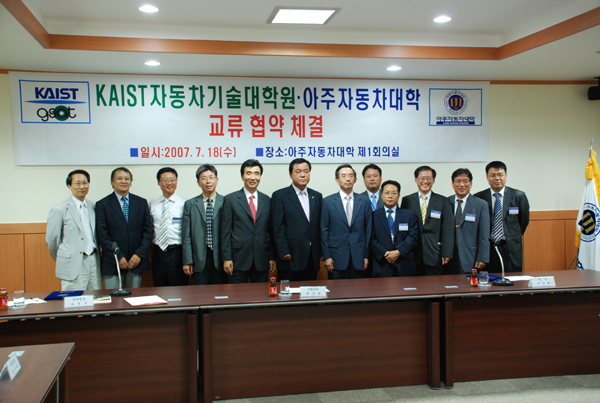 Cooperation Agreement with Ajou Motor College
Cooperation Agreement with Ajou Motor College
KAIST Graduate School of Automobile Technology to sign a cooperation agreement with Ajou Motor College
KAIST Graduate School of Automobile Technology (GSAT) signed a cooperation agreement with Ajou Motor College (AMC) on July 18th.
Under the agreement, the both schools will share education and research facilities and promote mutual cooperation for joint education and researches.
Lawmaker Geun-Chan Ryu, KAIST Vice President of Budget & Planning Ji-Won Yang, GSAT Dean Suck-Joo Na, AMC Dean Soo-Hoon Lee, etc. attended the ceremony.
2007.07.24 View 15774
Cooperation Agreement with Ajou Motor College
Cooperation Agreement with Ajou Motor College
KAIST Graduate School of Automobile Technology to sign a cooperation agreement with Ajou Motor College
KAIST Graduate School of Automobile Technology (GSAT) signed a cooperation agreement with Ajou Motor College (AMC) on July 18th.
Under the agreement, the both schools will share education and research facilities and promote mutual cooperation for joint education and researches.
Lawmaker Geun-Chan Ryu, KAIST Vice President of Budget & Planning Ji-Won Yang, GSAT Dean Suck-Joo Na, AMC Dean Soo-Hoon Lee, etc. attended the ceremony.
2007.07.24 View 15774 -
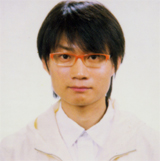 Ki-Won Lee Receives Best Student Paper Award
Ki-Won Lee Receives Best Student Paper Award
Ki-Won Lee, a doctoral student of Materials Science & Engineering, has received the Best Student Paper Award ‘Motorola Fellowship Award’ at 2007 Electronic Components and Technology Conference (ECTC).
Lee’s paper is about a new bonding process of anisotropic conductive film using ultrasonic wave, which applies ultrasonic wave, instead of thermal compression, at the room temperature to reduce the process time from ten to three seconds.
The recipients of Motorola Fellowship Award are selected by IEEE Components, Packaging and Manufacturing Technology Society, and Motorola awards special scholarship to recipients. The ECTC is the world’s largest yearly conference concerning electronic packaging technologies with more than 1,000 attendees and more than 300 presented papers.
2007.07.02 View 18330
Ki-Won Lee Receives Best Student Paper Award
Ki-Won Lee Receives Best Student Paper Award
Ki-Won Lee, a doctoral student of Materials Science & Engineering, has received the Best Student Paper Award ‘Motorola Fellowship Award’ at 2007 Electronic Components and Technology Conference (ECTC).
Lee’s paper is about a new bonding process of anisotropic conductive film using ultrasonic wave, which applies ultrasonic wave, instead of thermal compression, at the room temperature to reduce the process time from ten to three seconds.
The recipients of Motorola Fellowship Award are selected by IEEE Components, Packaging and Manufacturing Technology Society, and Motorola awards special scholarship to recipients. The ECTC is the world’s largest yearly conference concerning electronic packaging technologies with more than 1,000 attendees and more than 300 presented papers.
2007.07.02 View 18330 -
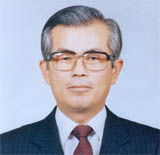 Emeritus Professor Lee Dies
Jeong-Oh Lee, Emeritus Professor of Mechanical Engineering, died of his chronic disease on June 15, 2007 at his age of 76.
The late Lee began his lecturing career at Mechanical Engineering Department in 1973 and had made considerable devotions to the education and development of mechanical engineering for 24 years. As the former Minister of Science and Technology, former President of Korea Institute of Science and Technology, and former President of Korea Advanced Institute of Science and Technology, he also has made significant contributions to the development of Korean science and technology.
Particularly, he played key roles in vitalizing Daeduk Research Complex (DRC) by planning and executing the movement of government-funded institutes despite the inactive research atmosphere in the early 1980s. He also set up the Extended Council for Technology Promotion, consisting of many distinguished persons from diverse fields under the supervision of the President, to make significant contributions to the promotion and spread of technology innovation among governmental and civil enterprises. He received Cheongjo Geunjeong Medal in 1985 and never stopped his devotion to the education of young students even after his retirement in 1997.
<Funeral Notice>- Date: Sunday, June 17, 2007 at 7 am.- Place: Eulji University Hospital, Daejeon- Graveyard: Cheonan graveyard- Bereaved family Wife Ok-Hyang Kang Son Jong-Sun Lee, Professor of Handong University Han-Sun Lee, LG Chemicals Daughter Myung-Ae Lee Son-in-law Young-Soo Lee, Korea Institute of Industrial Technology- Contact Point: C.P. 019.480.2451 (Han-Sun Lee)
2007.06.18 View 16674
Emeritus Professor Lee Dies
Jeong-Oh Lee, Emeritus Professor of Mechanical Engineering, died of his chronic disease on June 15, 2007 at his age of 76.
The late Lee began his lecturing career at Mechanical Engineering Department in 1973 and had made considerable devotions to the education and development of mechanical engineering for 24 years. As the former Minister of Science and Technology, former President of Korea Institute of Science and Technology, and former President of Korea Advanced Institute of Science and Technology, he also has made significant contributions to the development of Korean science and technology.
Particularly, he played key roles in vitalizing Daeduk Research Complex (DRC) by planning and executing the movement of government-funded institutes despite the inactive research atmosphere in the early 1980s. He also set up the Extended Council for Technology Promotion, consisting of many distinguished persons from diverse fields under the supervision of the President, to make significant contributions to the promotion and spread of technology innovation among governmental and civil enterprises. He received Cheongjo Geunjeong Medal in 1985 and never stopped his devotion to the education of young students even after his retirement in 1997.
<Funeral Notice>- Date: Sunday, June 17, 2007 at 7 am.- Place: Eulji University Hospital, Daejeon- Graveyard: Cheonan graveyard- Bereaved family Wife Ok-Hyang Kang Son Jong-Sun Lee, Professor of Handong University Han-Sun Lee, LG Chemicals Daughter Myung-Ae Lee Son-in-law Young-Soo Lee, Korea Institute of Industrial Technology- Contact Point: C.P. 019.480.2451 (Han-Sun Lee)
2007.06.18 View 16674 -
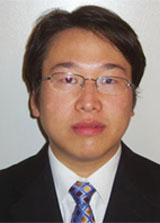 KAIST Graduate Selected As Winner of IEEE Outstanding Young Engineer Award
- First Korean winner of IEEE Outstanding Young Engineer Award
Dr. Myung-Jin Rhim, Bachelor, Master, and Ph.D of KAIST, has been selected to receive 2007 Outstanding Young Engineer Award by the Institute of Electrical and Electronics Engineers (IEEE) Components, Packaging, and Manufacturing Technology (CPMT) Society. Dr. Rhim will be the first Korean winner of the award.
Dr. Rhim received his Ph.D of Materials Science & Engineering at KAIST in 2001 and has made outstanding research outputs, such as 28 papers at international journals covered by Science Citation Index (SCI) and 12 international patents. He has been also listed in Marquis Who’s Who in the World, Who’s Who of Emerging Leaders, Who’s Who in Asia, and Outstanding Intellectual of the 21st Century, 21st Century Award for Achievement published by the International Biographical Centre of Cambridge, England.
IEEE CPMT Society has yearly awarded the Outstanding Young Engineer Award to a scientist or engineer of electronic components, packaging, and manufacturing technology prior to his or her 35th birthday in recognition of his or her research achievements. Dr. Rhim is now in his postdoctoral program at Georgia Institute of Technology in USA.
2007.06.14 View 17241
KAIST Graduate Selected As Winner of IEEE Outstanding Young Engineer Award
- First Korean winner of IEEE Outstanding Young Engineer Award
Dr. Myung-Jin Rhim, Bachelor, Master, and Ph.D of KAIST, has been selected to receive 2007 Outstanding Young Engineer Award by the Institute of Electrical and Electronics Engineers (IEEE) Components, Packaging, and Manufacturing Technology (CPMT) Society. Dr. Rhim will be the first Korean winner of the award.
Dr. Rhim received his Ph.D of Materials Science & Engineering at KAIST in 2001 and has made outstanding research outputs, such as 28 papers at international journals covered by Science Citation Index (SCI) and 12 international patents. He has been also listed in Marquis Who’s Who in the World, Who’s Who of Emerging Leaders, Who’s Who in Asia, and Outstanding Intellectual of the 21st Century, 21st Century Award for Achievement published by the International Biographical Centre of Cambridge, England.
IEEE CPMT Society has yearly awarded the Outstanding Young Engineer Award to a scientist or engineer of electronic components, packaging, and manufacturing technology prior to his or her 35th birthday in recognition of his or her research achievements. Dr. Rhim is now in his postdoctoral program at Georgia Institute of Technology in USA.
2007.06.14 View 17241 -
 Largest Number of Teams Selected From KAIST at 2007 LG Global Challenger Contest
Largest Number of Teams Selected From KAIST at 2007 LG Global Challenger Contest
The largest number of teams has been selected from KAIST at 2007 LG Global Challenger Contest
Despite of the record high competitive rate of 30/ 800, the largest number of teams has been selected from KAIST at 2007 LG Global Challenger Contest.
LG Global Challenger Contest is an exploration program where undergraduate and graduate students perform explorations on their own schedules and share the results with the public online.
Thus far, about 1,500 students from 410 teams have participated in the contest, and the contest is now regarded as the most representative overseas exploration program among university students, showing the average competitive rate of 1/ 20.
Exploration teams are selected by thorough examination and the members of selected teams have to complete the preliminary education program. The exploration teams will perform two-week overseas exploration on their own schedule during the summer vacation and their exploration activities will be relayed through the official web site of the contest by the designated team for online relay.
The exploration teams are obliged to submit the result reports, and the winners of the prize for good reports will be granted scholarship and employment privileges. The followings are the selected teams from KAIST:
Name: U-rekaTopic: U-Eco City, Advanced city where nature and human are well harmonizedMembers: A-Chim Chang (Department of Civil and Environmental Engineering)Hyuk-Il Cho (Department of Computer Sciences)Jung-Hyun Hong (Department of Industrial Engineering)Seung-Kyun Ryu (Department of Computer Sciences)
Name: TWIMTopic: The trend of unmanned ground vehicle development and its influence on unmanned societyMembers: Moon-Jung Byun (Department of Mechanical Engineering)Joon-Seok Park (Department of Electrical Engineering)Hye-Sun Hyun (Department of Electrical Engineering)Jong-Hoon Kim (Department of Electrical Engineering)
Team Impediment-free ODATopic: Future way of Korean ODAMembers: Joon-Youn Kim (Department of Industrial Engineering) Jae-Min Kim (Department of Industrial Engineering)Yoon-Jung Choi (Department of Industrial Engineering)Seul-Ki Lee (Department of Industrial Engineering)
2007.06.12 View 18007
Largest Number of Teams Selected From KAIST at 2007 LG Global Challenger Contest
Largest Number of Teams Selected From KAIST at 2007 LG Global Challenger Contest
The largest number of teams has been selected from KAIST at 2007 LG Global Challenger Contest
Despite of the record high competitive rate of 30/ 800, the largest number of teams has been selected from KAIST at 2007 LG Global Challenger Contest.
LG Global Challenger Contest is an exploration program where undergraduate and graduate students perform explorations on their own schedules and share the results with the public online.
Thus far, about 1,500 students from 410 teams have participated in the contest, and the contest is now regarded as the most representative overseas exploration program among university students, showing the average competitive rate of 1/ 20.
Exploration teams are selected by thorough examination and the members of selected teams have to complete the preliminary education program. The exploration teams will perform two-week overseas exploration on their own schedule during the summer vacation and their exploration activities will be relayed through the official web site of the contest by the designated team for online relay.
The exploration teams are obliged to submit the result reports, and the winners of the prize for good reports will be granted scholarship and employment privileges. The followings are the selected teams from KAIST:
Name: U-rekaTopic: U-Eco City, Advanced city where nature and human are well harmonizedMembers: A-Chim Chang (Department of Civil and Environmental Engineering)Hyuk-Il Cho (Department of Computer Sciences)Jung-Hyun Hong (Department of Industrial Engineering)Seung-Kyun Ryu (Department of Computer Sciences)
Name: TWIMTopic: The trend of unmanned ground vehicle development and its influence on unmanned societyMembers: Moon-Jung Byun (Department of Mechanical Engineering)Joon-Seok Park (Department of Electrical Engineering)Hye-Sun Hyun (Department of Electrical Engineering)Jong-Hoon Kim (Department of Electrical Engineering)
Team Impediment-free ODATopic: Future way of Korean ODAMembers: Joon-Youn Kim (Department of Industrial Engineering) Jae-Min Kim (Department of Industrial Engineering)Yoon-Jung Choi (Department of Industrial Engineering)Seul-Ki Lee (Department of Industrial Engineering)
2007.06.12 View 18007 -
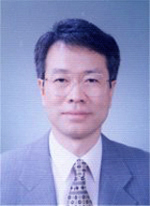 Prof. Whang Named Distinguished Database Profile by ACM SIGMOD
Professor Kyu-Young Whang of Computer Sciences has been named as Distinguished Database Profile (DDP) by Association for Computing Machinery Special Interest Group on Management Of Data (ACM SIGMOD).
DDP is a section of ACM SIGMOD Record that introduces researchers who have made significant global contributions in database field.
Thus far, about 20 researchers including Jeff Ullman and Jim Gray have been named as DDPs for their achievements such as establishment of new theories and technologies in database field, and Prof. Hwang is the first researcher named as DDP in the Asian-Pacific region.
Prof. Whang’s interview (directed by Marianne Winslett, Professor of UIUC, and Eric Bina, co-founder of Netscape) can be seen on http://www.sigmod.org/interviews and will be published at ACM SIGMOD Record in 2008.
2007.06.07 View 14549
Prof. Whang Named Distinguished Database Profile by ACM SIGMOD
Professor Kyu-Young Whang of Computer Sciences has been named as Distinguished Database Profile (DDP) by Association for Computing Machinery Special Interest Group on Management Of Data (ACM SIGMOD).
DDP is a section of ACM SIGMOD Record that introduces researchers who have made significant global contributions in database field.
Thus far, about 20 researchers including Jeff Ullman and Jim Gray have been named as DDPs for their achievements such as establishment of new theories and technologies in database field, and Prof. Hwang is the first researcher named as DDP in the Asian-Pacific region.
Prof. Whang’s interview (directed by Marianne Winslett, Professor of UIUC, and Eric Bina, co-founder of Netscape) can be seen on http://www.sigmod.org/interviews and will be published at ACM SIGMOD Record in 2008.
2007.06.07 View 14549 -
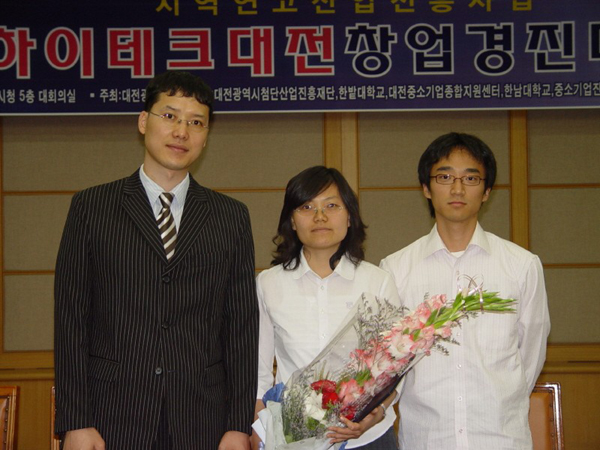 KAIST Students Wins Gold Prize at Technical Idea Contest
KAIST Students Wins Gold Prize at Technical Idea Contest
- Receive the gold prize at the 3rd High-Tech Daejeon Technical Idea Contest for Company Establishment- For the development of a new system to convert complex web page addresses to short and meaningful addresses
Sang-Hoon Kim, Song-Hwa Chae and Dong-Hun Lee of Chemical and Biomolecular Engineering won the gold prize at the prospective company establishment part in the 3rd High-Tech Daejeon Technical Idea Contest for Company Establishment on May 21 for their valuable development of ‘Web Page Address Clipping System’.
So far, simplified web page addresses include special characters, which make the addresses long and complex. That is, the current address simplification service combines meaningless random words and numerals to create addresses when web page addresses are entered. In this case, the addresses are not easy to share with others and reuse several times since they are difficult to memorize.
However, the ‘Web Page Address Clipping System’ shortens meaningless long addresses. In addition, the improved address simplification service will provide user’s own addresses, and statistics and ranking to clipping addresses frequently used.
Based on this technology, Kim and Chae are now preparing to open a company called ‘URLClip’ under the auspice of Professor Tae-Yong Yang and Researcher In-Soo Kim, KAIST Entrepreneurship Center. They are also expanding their service areas onto clipping library for individual users, host name services for enterprises, etc. and developing tool bar, RSS service (RSS is an acronym of RDF (or Rich) Site Summary. It refers to a service that automatically and easily provides frequently updated contents such as news and blogs to users), etc. to improve users’ conveniences.
URLClip (http://www.urlclip.net) is a next generation portal site, which is expected to provide a variety of individualized services based on Web Page Address Clipping Service and to be used by many enterprises as well as individual users who wish to enhance their access to useful contents.
“Chemical & Biomolecular Engineering Professor Sun-Won Park has offered lots of helps and supports, so I could decide to commercialize the developed technologies. The application of this technology to real life will allow further comfortable uses of internet to users,” Kim said.
Narae Team received the best prize last April at the 2nd Pre-Star Venture Company-Opening Contest hosted by KAIST and Hanbat Univeristy, and the technology is pending a patent application.
Inquiry:Sang-Hoon Kim, Dep. of Chemical and Biomolecular Engineering, H.P. 010-4754-9947Song-Hwa Chae, Dep. of Chemical and Biomolecular Engineering, H.P. 010-7223-9947Home page: http://www.urlclip.netEmail: urlclip@urlclip.net
2007.06.05 View 16366
KAIST Students Wins Gold Prize at Technical Idea Contest
KAIST Students Wins Gold Prize at Technical Idea Contest
- Receive the gold prize at the 3rd High-Tech Daejeon Technical Idea Contest for Company Establishment- For the development of a new system to convert complex web page addresses to short and meaningful addresses
Sang-Hoon Kim, Song-Hwa Chae and Dong-Hun Lee of Chemical and Biomolecular Engineering won the gold prize at the prospective company establishment part in the 3rd High-Tech Daejeon Technical Idea Contest for Company Establishment on May 21 for their valuable development of ‘Web Page Address Clipping System’.
So far, simplified web page addresses include special characters, which make the addresses long and complex. That is, the current address simplification service combines meaningless random words and numerals to create addresses when web page addresses are entered. In this case, the addresses are not easy to share with others and reuse several times since they are difficult to memorize.
However, the ‘Web Page Address Clipping System’ shortens meaningless long addresses. In addition, the improved address simplification service will provide user’s own addresses, and statistics and ranking to clipping addresses frequently used.
Based on this technology, Kim and Chae are now preparing to open a company called ‘URLClip’ under the auspice of Professor Tae-Yong Yang and Researcher In-Soo Kim, KAIST Entrepreneurship Center. They are also expanding their service areas onto clipping library for individual users, host name services for enterprises, etc. and developing tool bar, RSS service (RSS is an acronym of RDF (or Rich) Site Summary. It refers to a service that automatically and easily provides frequently updated contents such as news and blogs to users), etc. to improve users’ conveniences.
URLClip (http://www.urlclip.net) is a next generation portal site, which is expected to provide a variety of individualized services based on Web Page Address Clipping Service and to be used by many enterprises as well as individual users who wish to enhance their access to useful contents.
“Chemical & Biomolecular Engineering Professor Sun-Won Park has offered lots of helps and supports, so I could decide to commercialize the developed technologies. The application of this technology to real life will allow further comfortable uses of internet to users,” Kim said.
Narae Team received the best prize last April at the 2nd Pre-Star Venture Company-Opening Contest hosted by KAIST and Hanbat Univeristy, and the technology is pending a patent application.
Inquiry:Sang-Hoon Kim, Dep. of Chemical and Biomolecular Engineering, H.P. 010-4754-9947Song-Hwa Chae, Dep. of Chemical and Biomolecular Engineering, H.P. 010-7223-9947Home page: http://www.urlclip.netEmail: urlclip@urlclip.net
2007.06.05 View 16366 -
 KAIST Graduate School of Information Media Management Opens Blog for Web2.0 Lectures
KAIST Graduate School of Information Media Management Opens Blog for Web2.0 Lectures
- http://webtwo.kaist.ac.kr
The Graduate School of Media Information Management of KAIST (President Nam Pyo Suh) has opened a blog to share the contents of and hear various opinions on Web2.0 Lecture programs, established this semester.
Web2.0 Lecture refers to a program to deliver and educate a variety of ongoing projects and market responses, along with scholarly and theoretical accesses in a real-time basis. The lectures will be made by invited experts in the fields of web and mobile, which are yet to be established academically, but have created huge markets. Lectures on recent hot issues, such as the relevant technologies, trends, cultures, policies, and markets of Web2.0, will be firstly made.
The blog provides highlight moving pictures of the lectures and comments by professors and assistants, and is expected to deliver high quality contents to faculty and students interested in Web2.0. In addition, professors and assistants will share opinions online with lecture takers.
Professors in charge: Prof. Sunghee Kim, Prof. Dongwan Cha, Prof. Choonghee Ryu, Prof. Jaesun HanAssistants in charge: Jinwoo Park, Daejin Chung, Kyungeun Sung.
Contents:1. Trens & Internet: Market and Technology① Web2.0 overview (Sangoo Cho, Managing Director of KTH)② Collective Intelligence (PRAK, President of Mar.gar.in)③ UCC (Jangho Kim, Manger, KBSi)④ Blog (Jeongseok Noh, President of T&C)⑤ Copyright and CCL (Jongsoo Yoon, Judge of CCK)⑥ Long-tail (Hyogon Chang, President of Innomove)⑦ Search 2.0 (Byungkook Chun, President of Searching Engine Mast)
2. Web2.0 and Beyond① Web2.0 & Convergence (Kyungjeon Lee, Professor of Kyunghee University)② Web2.0 & business (Sooman Park, President of Double Track)③ Social Computing (Sangki Han, President of Opinity AP)④ Web2.0 & Media (Yongseok Hwang, Professor of Kunkook University)⑤ Attention Economy (Taweoo Ki, Taewoo’s log)⑥ Mobile Web2.0 (Jonghong Chun, Senior researcher of ETRI)
2007.05.14 View 13539
KAIST Graduate School of Information Media Management Opens Blog for Web2.0 Lectures
KAIST Graduate School of Information Media Management Opens Blog for Web2.0 Lectures
- http://webtwo.kaist.ac.kr
The Graduate School of Media Information Management of KAIST (President Nam Pyo Suh) has opened a blog to share the contents of and hear various opinions on Web2.0 Lecture programs, established this semester.
Web2.0 Lecture refers to a program to deliver and educate a variety of ongoing projects and market responses, along with scholarly and theoretical accesses in a real-time basis. The lectures will be made by invited experts in the fields of web and mobile, which are yet to be established academically, but have created huge markets. Lectures on recent hot issues, such as the relevant technologies, trends, cultures, policies, and markets of Web2.0, will be firstly made.
The blog provides highlight moving pictures of the lectures and comments by professors and assistants, and is expected to deliver high quality contents to faculty and students interested in Web2.0. In addition, professors and assistants will share opinions online with lecture takers.
Professors in charge: Prof. Sunghee Kim, Prof. Dongwan Cha, Prof. Choonghee Ryu, Prof. Jaesun HanAssistants in charge: Jinwoo Park, Daejin Chung, Kyungeun Sung.
Contents:1. Trens & Internet: Market and Technology① Web2.0 overview (Sangoo Cho, Managing Director of KTH)② Collective Intelligence (PRAK, President of Mar.gar.in)③ UCC (Jangho Kim, Manger, KBSi)④ Blog (Jeongseok Noh, President of T&C)⑤ Copyright and CCL (Jongsoo Yoon, Judge of CCK)⑥ Long-tail (Hyogon Chang, President of Innomove)⑦ Search 2.0 (Byungkook Chun, President of Searching Engine Mast)
2. Web2.0 and Beyond① Web2.0 & Convergence (Kyungjeon Lee, Professor of Kyunghee University)② Web2.0 & business (Sooman Park, President of Double Track)③ Social Computing (Sangki Han, President of Opinity AP)④ Web2.0 & Media (Yongseok Hwang, Professor of Kunkook University)⑤ Attention Economy (Taweoo Ki, Taewoo’s log)⑥ Mobile Web2.0 (Jonghong Chun, Senior researcher of ETRI)
2007.05.14 View 13539 -
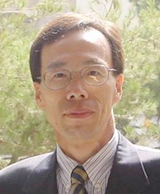 Professor Yang Named Recipient of Dupont Science & Technology Award
Professor Yang Named Recipient of Dupont Science & Technology Award
- Named as the recipient of Dupont Science & Technology Award of 2007- In recognition of his development of optical?bio-functional photonic crystal structures through Self-assembly of nanoparticles
Seung-Man Yang, a professor of Chemical and Biomolecular Engineering of KAIST (President Nam Pyo Suh) and the president of the National Creative Research Initiatives Center for Photon and Fluid Integrated Circuit by the Ministry of Science and Technology, has been named as the recipient of Dupont Science & Technology Award.
Dupont Korea, associate of Dupont, a world-class science firm, has established and conferred ‘Dupont Science & Technology Award’ since 2002 to promote basic sciences and industrial development of Korea. Dupont Science & Technology Awards are awarded to scientists of universities or state-run institutes who have made outstanding R&D achievements in the fields of Chemistry, Chemical Engineering, Material Science and Material Engineering within five years. Dupont Korea announced on May 2, 2007 that Professor Yang is the recipient of the award this year, following the strict examination by the Koran Academy of Science and Technology (KAST).
The reason for the award is Professor Yang’s development of prototype optical?bio-functional photonic crystal structures that can process a huge amount of data, resulting from a study that has discovered the principle of Self-assembly where multifunctional nanoparticles are manufactured and assembled for themselves.
Professor Yang’s recent research result about photon structures and nano patterns was published by Nature (February 2, 2006 edition); posted on Heart-Cut, the portal site of the American Chemistry Society (ACS), as highlight paper two times (November 4, 2002 and May 1, 2006); and introduced at Research/Researcher of MRS Bulletin by the U.S. Material Research Society (MRS) as main paper in December 2003. Professor Yang is very famous in Korea and abroad for the excellences of his research achievements and has made request seminars at Harvard University, University of Wisconsin, Caltech, University of California, etc. He is also invited speaker and session organizer of the MRS and the SPIE.
2007.05.08 View 19803
Professor Yang Named Recipient of Dupont Science & Technology Award
Professor Yang Named Recipient of Dupont Science & Technology Award
- Named as the recipient of Dupont Science & Technology Award of 2007- In recognition of his development of optical?bio-functional photonic crystal structures through Self-assembly of nanoparticles
Seung-Man Yang, a professor of Chemical and Biomolecular Engineering of KAIST (President Nam Pyo Suh) and the president of the National Creative Research Initiatives Center for Photon and Fluid Integrated Circuit by the Ministry of Science and Technology, has been named as the recipient of Dupont Science & Technology Award.
Dupont Korea, associate of Dupont, a world-class science firm, has established and conferred ‘Dupont Science & Technology Award’ since 2002 to promote basic sciences and industrial development of Korea. Dupont Science & Technology Awards are awarded to scientists of universities or state-run institutes who have made outstanding R&D achievements in the fields of Chemistry, Chemical Engineering, Material Science and Material Engineering within five years. Dupont Korea announced on May 2, 2007 that Professor Yang is the recipient of the award this year, following the strict examination by the Koran Academy of Science and Technology (KAST).
The reason for the award is Professor Yang’s development of prototype optical?bio-functional photonic crystal structures that can process a huge amount of data, resulting from a study that has discovered the principle of Self-assembly where multifunctional nanoparticles are manufactured and assembled for themselves.
Professor Yang’s recent research result about photon structures and nano patterns was published by Nature (February 2, 2006 edition); posted on Heart-Cut, the portal site of the American Chemistry Society (ACS), as highlight paper two times (November 4, 2002 and May 1, 2006); and introduced at Research/Researcher of MRS Bulletin by the U.S. Material Research Society (MRS) as main paper in December 2003. Professor Yang is very famous in Korea and abroad for the excellences of his research achievements and has made request seminars at Harvard University, University of Wisconsin, Caltech, University of California, etc. He is also invited speaker and session organizer of the MRS and the SPIE.
2007.05.08 View 19803 -
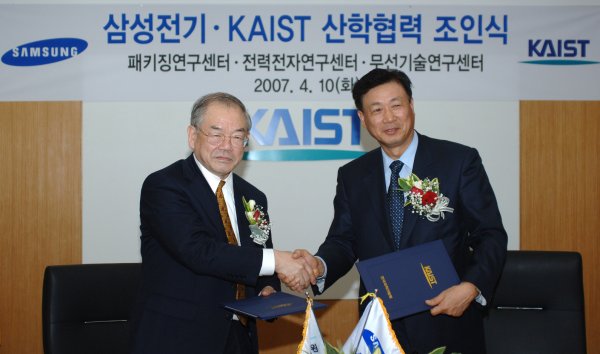 KAIST and Samsung Electrics Signs Cooperation Agreement
- Industry-Academy cooperation program for enhancing global competitiveness and for obtaining new growth momentum
- Two research institutes - Power Electronics Institute and Packaging Institute - open in KAIST- Fostering customized experts through researcher reeducation, field experiences, etc.
KAIST (President Nam-Pyo Suh) and Samsung Electronics (President Ho-Moon Kang) will be promoting industry-academy cooperative activities to enhance their global competitiveness and to obtain new growth momentum.
The both parties singed the agreement at KAIST conference room 1 on April 10, Tuesday, and two new research institutes - Power Electronics Institute (PEI) and Packaging Institute (PI) -opened this day. As a result, KAIST holds three research institutes managed in cooperation with Samsung Electronics, including the Radio Technology Institute (RTI) which was opened in 2005.
The PEI aims to develop power supply devices for high-efficiency and high-power servers of flat display power supply, and will foster customized experts through researcher reeducation and field experiences.
The PI will foster experts for improving packaging qualities and for developing next-generation technologies. Packing technologies are in the core field of electronics part industries which is going for integrating, systemizing and modulization.
“I’m sure outstanding industry-academy researches and student education will raise the standings of the both bodies, and I promise generous support to produce further significant research results,” said KAIST President Suh.
“This cooperation program will become an example of successful industry-academy cooperation. I’m expecting KAIST will become a trustworthy partner for Samsung Electronics to jump into one of the world’s top-class enterprises,” said Samsung Electronics President Kang.
2007.04.23 View 14214
KAIST and Samsung Electrics Signs Cooperation Agreement
- Industry-Academy cooperation program for enhancing global competitiveness and for obtaining new growth momentum
- Two research institutes - Power Electronics Institute and Packaging Institute - open in KAIST- Fostering customized experts through researcher reeducation, field experiences, etc.
KAIST (President Nam-Pyo Suh) and Samsung Electronics (President Ho-Moon Kang) will be promoting industry-academy cooperative activities to enhance their global competitiveness and to obtain new growth momentum.
The both parties singed the agreement at KAIST conference room 1 on April 10, Tuesday, and two new research institutes - Power Electronics Institute (PEI) and Packaging Institute (PI) -opened this day. As a result, KAIST holds three research institutes managed in cooperation with Samsung Electronics, including the Radio Technology Institute (RTI) which was opened in 2005.
The PEI aims to develop power supply devices for high-efficiency and high-power servers of flat display power supply, and will foster customized experts through researcher reeducation and field experiences.
The PI will foster experts for improving packaging qualities and for developing next-generation technologies. Packing technologies are in the core field of electronics part industries which is going for integrating, systemizing and modulization.
“I’m sure outstanding industry-academy researches and student education will raise the standings of the both bodies, and I promise generous support to produce further significant research results,” said KAIST President Suh.
“This cooperation program will become an example of successful industry-academy cooperation. I’m expecting KAIST will become a trustworthy partner for Samsung Electronics to jump into one of the world’s top-class enterprises,” said Samsung Electronics President Kang.
2007.04.23 View 14214